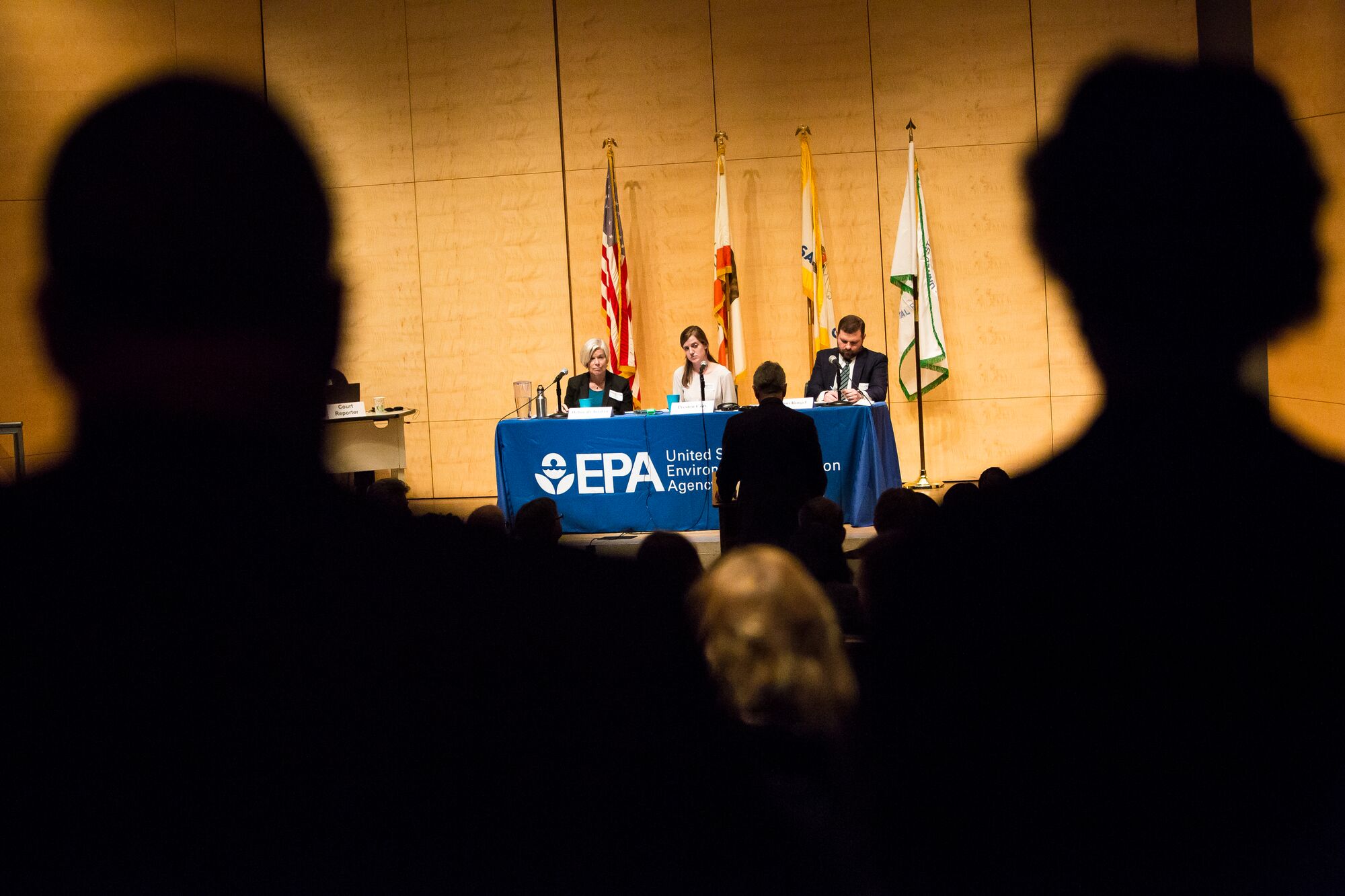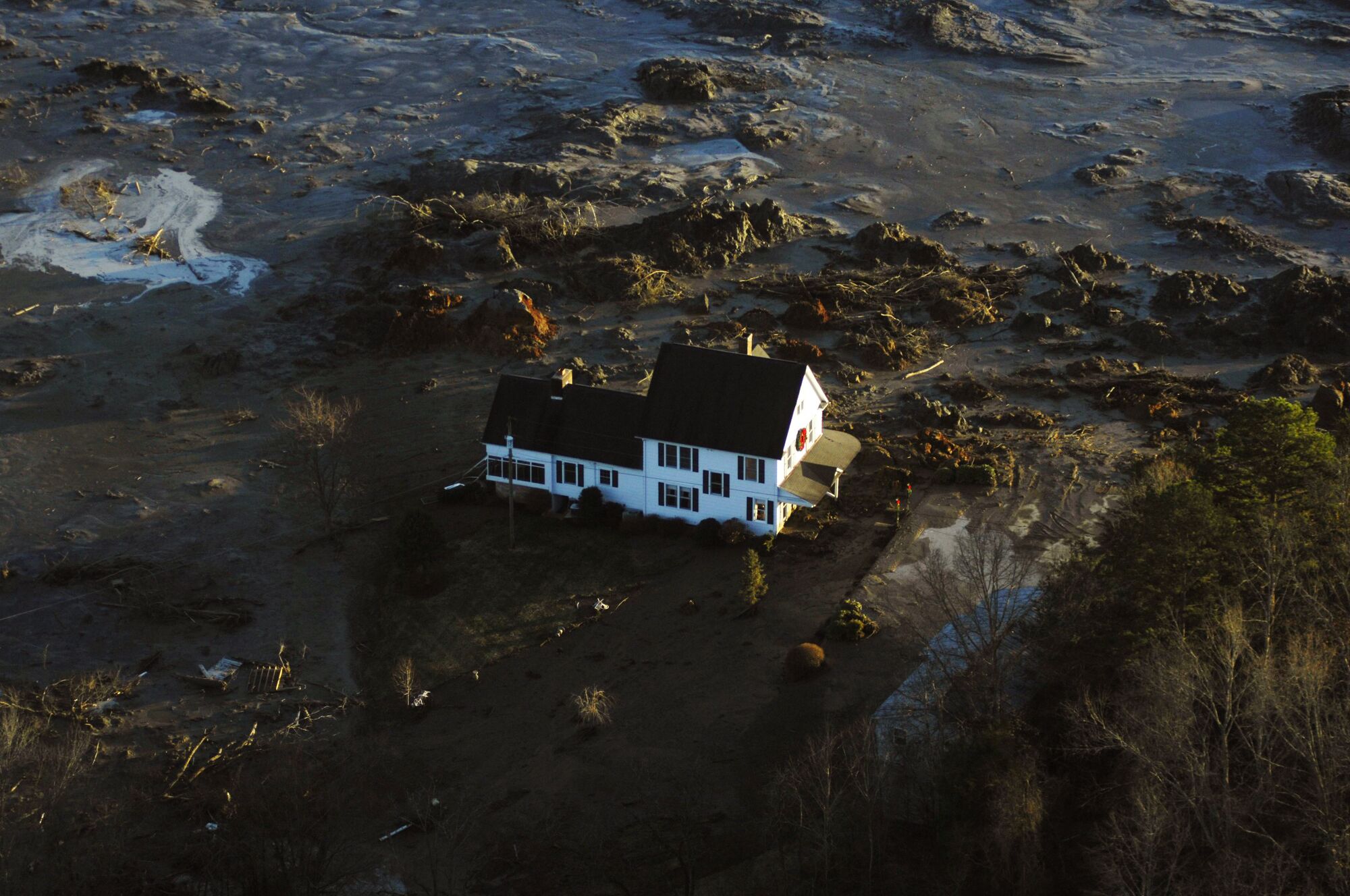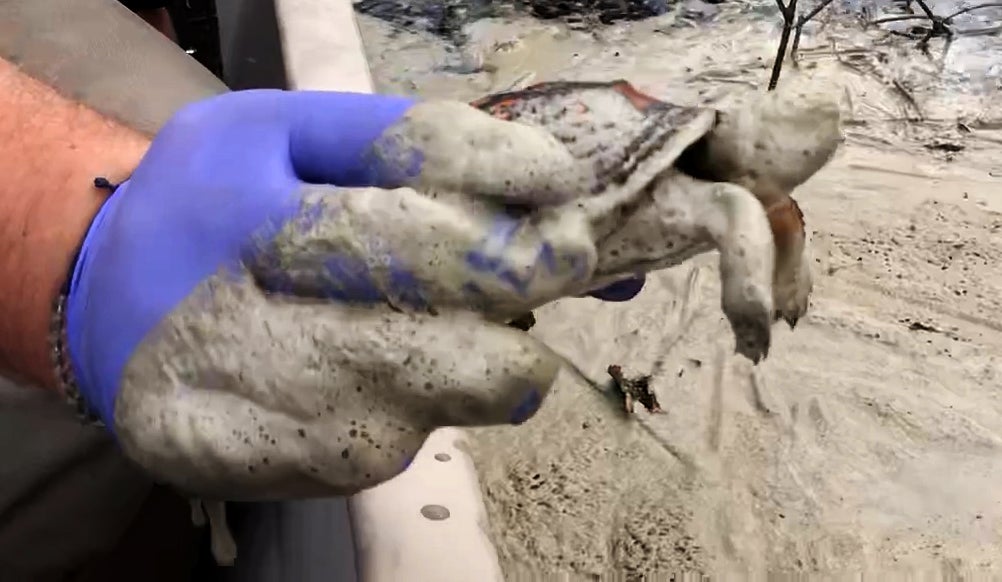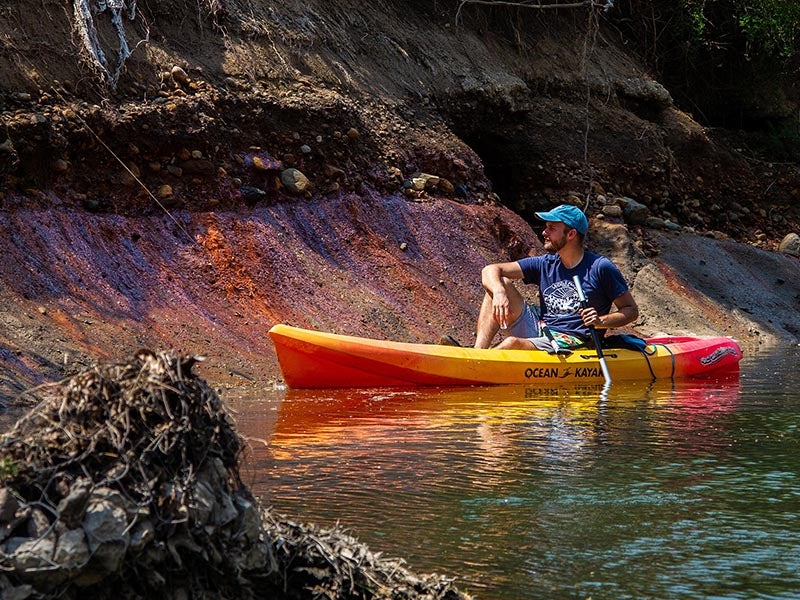June 13, 2023
Guide to Preparing for Public Hearings on the Legacy CCR Rule
What to expect at EPA's virtual and in-person hearings on the Legacy CCR Surface Impoundment Rule

After years of litigation and grassroots activism, the U.S. Environmental Protection Agency is addressing dangerous gaps in the 2015 Coal Ash Rule.
These gaps left half of U.S. coal ash unregulated and with no clean-up requirements.
Written comments on the Legacy CCR Surface Impoundment Rule must be submitted by Mon., July 17, 2023. Submit a written comment.
There are two hearings for public testimony.
It is critically important that community voices are heard!
Public hearings on the new rule:
- In-person public hearing in Chicago on Wed., June 28 (9am–6pm CT). More details and how to register.
- Virtual public hearing online on Wed., July 12 (9am–6pm ET). More details and how to register.
This resource provides tips to help you prepare for the virtual or in-person hearing.
Tips for Your Testimony
Testimony is limited to five minutes.
- In-Person Public Hearing: Write your comments down or bring notes. Practice your testimony so that you know it is no longer than five minutes. An average person can read 750 words in five minutes.
- Virtual Public Hearing: Follow the same tips as above. You can read your comments into the speaker on your computer or your phone.
Make it personal.
- Speak about your experiences and those of your community.
- Express your personal concerns.
- Don’t worry if your comments aren’t “technical” — you don’t need to be a scientific expert for your comments to matter.
- Do tell EPA your specific concerns — about your community, about a particular coal plant, or concerns related to drinking water, health, or recreation.
End with an “ask.”
- Demand that EPA do its job to protect you, your community, your environment, and the health and environment of the generations that will follow you.

Sample Testimony
1. Introduction
“Hello, my name is [my name] and I am from [my hometown and state]. I am a member of the [organization]. Thank you for this opportunity to testify.”
2. Your Personal Story
This is a very important part of your testimony. Use the prompts below to provide details about how you are personally hurt by coal ash pollution.
Tell your story, especially how close you live to a coal plant or water polluted by a coal plant, or how pollution from a coal plant hurts your quality of life. For example,
- Do you avoid boating, swimming, or fishing in a local waterway near a coal plant?
- Are you afraid to eat fish caught near a coal plant?
- Are you worried that coal ash is polluting your drinking water?
- Are you concerned that the structure holding a coal ash pond near you will fail?
- Does toxic dust blow from a nearby coal ash landfill or pond?
- Are you concerned that a coal plant is unsafe, and EPA is not doing enough to address it?
- Are you concerned that the owner of the coal plant will leave without cleaning up contamination, harming the community for generations to come?
Will the proposed rule benefit you and your community? Is there coal ash that industry now has to address for the first time?
- If so, speak to how this is important to you and your community.
3. General talking points
Please see key messages below.
4. Conclusion
Here is the place for YOUR ASK.
- Demand that the EPA do ALL it can do to protect you and your community.
- EPA must ensure that ALL coal ash is cleaned up!
Key Messages for Comments
- EPA should finalize these new, important protections, even if industry opposes them.
- EPA must regulate all coal ash. Complete site cleanup and closure of coal ash dumps and fill areas is the only way to stop toxic contamination and protect communities.
- EPA must enforce its rule to ensure safe closure and cleanup of coal ash nationwide.
- EPA must protect communities, especially environmental justice communities that are hurt by coal ash pollution.
- 91 percent of coal plants have contaminated groundwater with toxic chemicals above federal safety standards. EPA must ensure that coal plant owners clean up every coal ash dump.
- EPA needs to address coal ash used as structural fill, which means prohibiting the use of coal ash as a substitute for clean soil and making polluters clean up areas where coal ash was used as fill.

More Detailed Information About the Proposed Rule
The Good
EPA’s draft Legacy CCR Surface Impoundment Rule extends federal coal ash safeguards to hundreds of previously excluded older landfills and legacy ponds. The rule would require monitoring, closure, and cleanup at dumpsites that were completely exempted from EPA’s 2015 Coal Ash Rule and for all coal ash at coal plants where only some dumpsites were regulated. To see the many coal ash dumps not covered by the 2015 Coal Ash Rule, view our interactive map.
Many coal plant owners have avoided the 2015 Rule’s cleanup requirements by blaming unregulated coal ash dumps for any pollution they detect. As a result of utilities gaming the system, groundwater remains contaminated by toxic coal ash at most coal plants across the country. The proposed rule would end this practice by requiring site owners to monitor and clean up all coal ash at a given coal plant, rather than requiring cleanup for some dumps but not others. This site-wide approach in the proposed rule will lead to much more effective cleanup (if industry complies).
The Bad
The proposed rule may not extend regulations to all coal ash dumps. Some ponds that no longer contain water and some old coal ash landfills may continue to be excluded from federal protections.
EPA must ensure the proposed rule addresses:
- All coal ash ponds, including those that did not have water in them when the original rule became effective (October 2015) and have not contained water since.
- Inactive landfills at former coal plant sites that are not producing power and do not also have legacy ponds.
- All coal ash stored in floodplains, on unstable ground, and in wetlands.
- Coal ash that was used as construction fill at playgrounds, schools, and throughout neighborhoods.

Background on Coal Ash
What is coal ash?
Coal ash is the waste left behind when power companies burn coal for energy. It is a toxic mix of hazardous pollutants, carcinogens, and neurotoxins, including arsenic, boron, cobalt, chromium, lead, lithium, mercury, molybdenum, radium, selenium, and other heavy metals. These hazardous pollutants have been linked to cancer, heart and thyroid disease, reproductive failure, and neurological harm.
For decades, utilities disposed of coal ash by dumping it in unlined ponds, landfills, structural fills, and mines where the toxic pollution leaks into groundwater. Water weaponizes coal ash, carrying its toxic pollutants to nearby streams, rivers, and drinking water aquifers. At numerous dumpsites, toxic coal ash has contaminated drinking water supplies. In many places, coal ash ponds are held back by earthen or ash berms, which leak and may catastrophically fail.
Coal ash remains one of our nation’s largest toxic industrial waste streams. U.S. coal plants continue to produce approximately 70 million tons of coal ash every year.
How is coal ash currently regulated?
In 2015, EPA adopted its first-ever safeguards to protect people from toxic coal ash. But EPA excluded landfills and waste piles that stopped receiving coal ash before the rule went into effect, as well as coal ash ponds at power plants that stopped producing power before the rule’s effective date.
The 2015 Coal Ash Rule did not regulate about half of all coal ash in the U.S. — more than a billion tons — stored in hundreds of legacy coal ash ponds and landfills. The 2015 rule exempted these so-called “legacy” dumps from all monitoring, inspection, maintenance, closure, cleanup, and reporting requirements.
As aging coal plants across the U.S. retire, the companies that profited from burning coal for decades must not be allowed to walk away from toxic dumps they created.
As we move beyond coal, we can’t allow utilities to leave behind a toxic mess.
EPA must act quickly to ensure that utilities leave communities with sites that benefit rather than harm their health, environment, and economies. The damage from coal ash will worsen unless EPA strengthens and enforces the federal rule and ensures all coal ash dumps are regulated.

Additional Resources
- Interactive map of U.S. coal ash dumpsites: Use this map to understand where coal ash might be stored near you and how a given site may be impacted by the EPA’s expansion of the federal Coal Ash Rule.
- Coal ash state fact sheets: Learn about coal ash dumpsites in 31 states and Puerto Rico
- Earthjustice, Coal Ash Primer: Basic information about coal ash, toxicity, and disposal
- Poisonous Coverup: The Widespread Failure of the Power Industry to Clean Up Coal Ash Dumps: A report describing the widespread contamination caused by hundreds of coal plants and their pervasive violation of the cleanup and closure requirements of the federal Coal Ash Rule.

For More Information
Lisa Evans
Senior Counsel, Earthjustice
levans@earthjustice.org
Kathryn McGrath
Communications Strategist, Earthjustice
kmcgrath@earthjustice.org
Earthjustice fights in the courts for a long-term solution to the toxic menace of coal ash. And we act on behalf of dozens of clients and over 100 coalition partners to defeat legislative attempts to subvert federally enforceable safeguards of coal ash.
Earthjustice’s Clean Energy Program uses the power of the law and the strength of partnership to accelerate the transition to 100% clean energy.